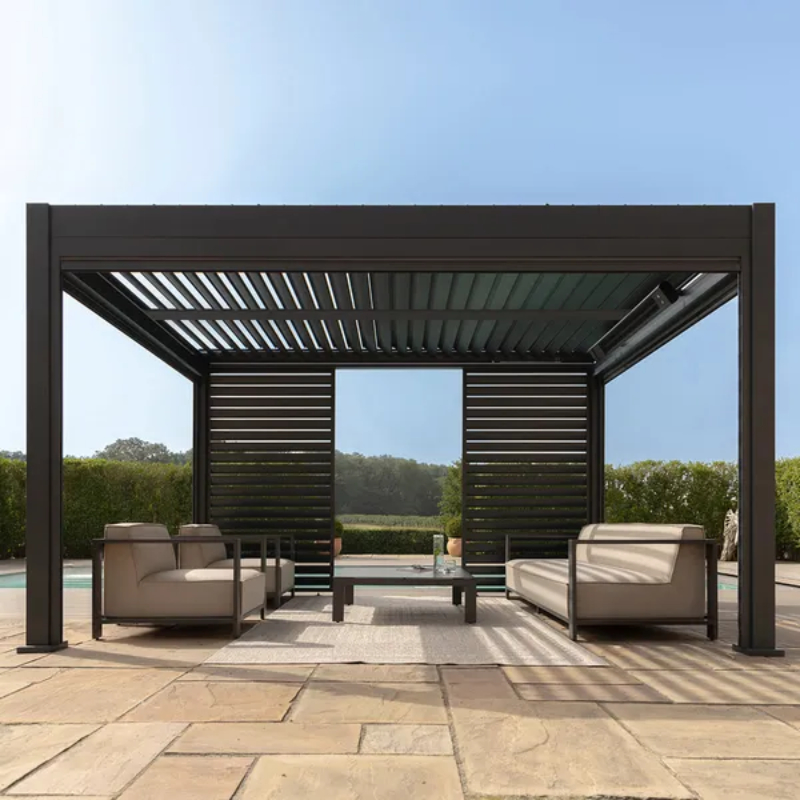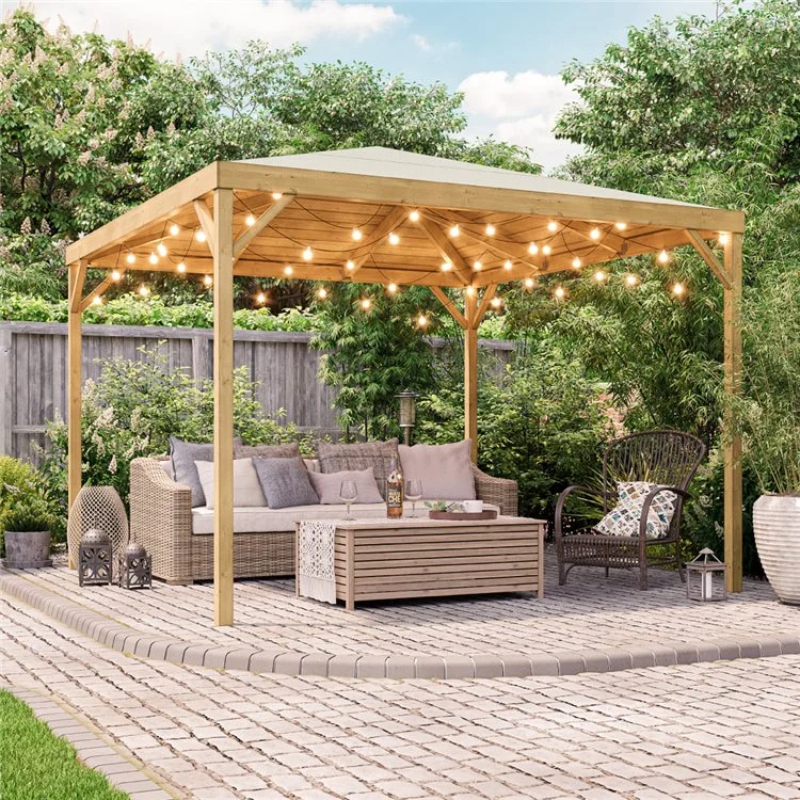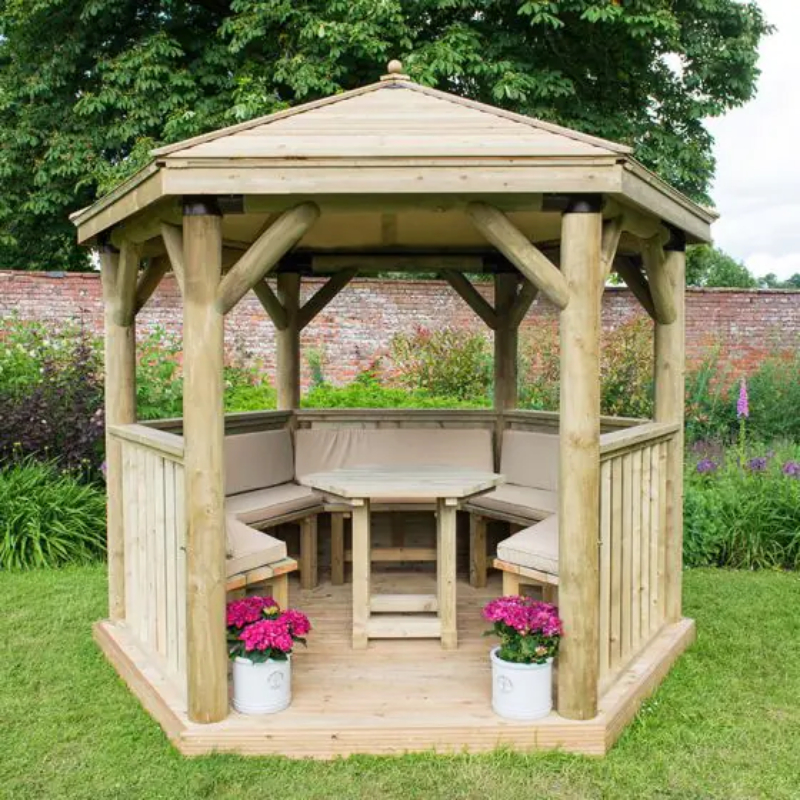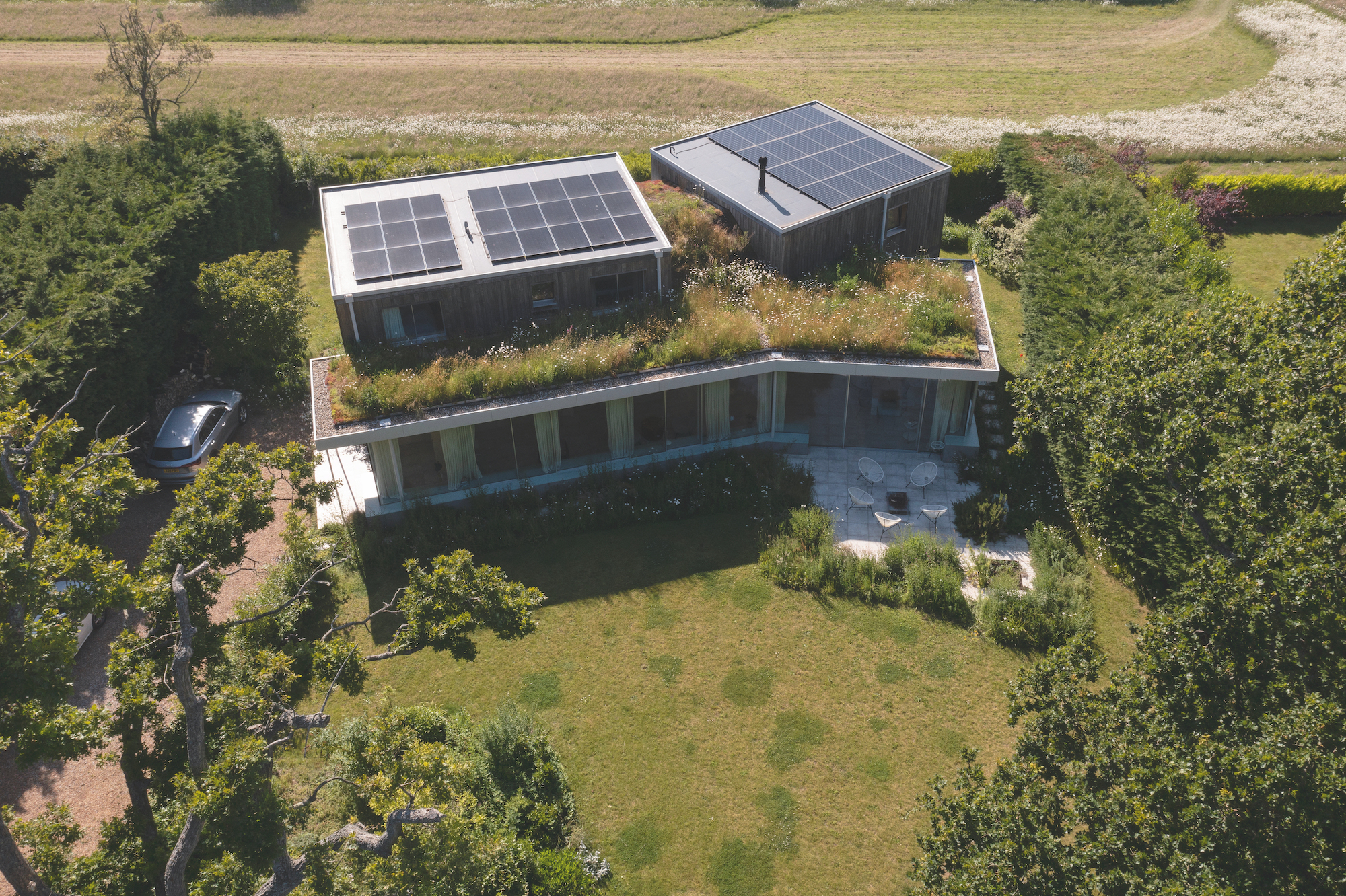Pergola vs gazebo — what's the difference and which one is right for your garden?
Weighing up the pros and cons of a pergola vs gazebo in your garden this summer? We explain the main differences between the two structures so you can decide which one to buy or build
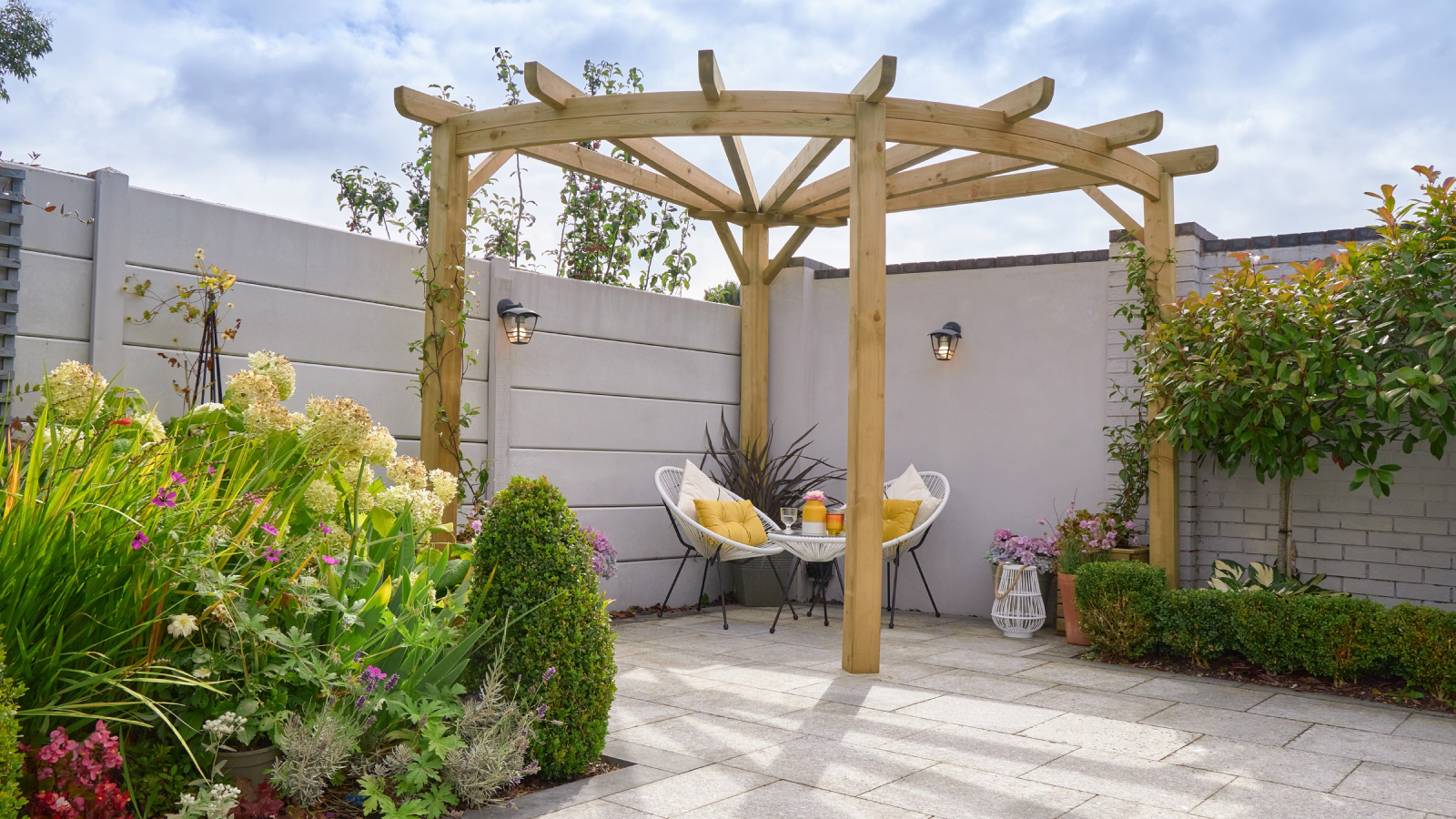
When it comes to the main difference between a pergola vs gazebo in garden design, the answer is relatively simple – a gazebo will generally have a fixed roof, whereas a pergola does not.
However, with more modern pergolas now often incorporating an element of semi-permanent or even permanent shading in the roof design, it can be harder to identify which structure is which and what might suit best your needs.
There's no doubting the ability of each structure to provide a solution to your shading requirements, but what are the other differences and which one works best in your outdoor space?
Pergola vs gazebo: Will your shady spot need a floor?
If you've already researched pergola ideas you'll probably have noticed there's also another main difference when it comes to pergola vs gazebo. A gazebo will usually have it's own floor as part of its integral structure, making it more of a freestanding unit.
A pergola on the other hand is usually made up from a frame and open roof structure and will need securing to the walls and often floor with the right fixings. There are also a variety of different pergola roof ideas available to choose from.
"There is a lot of overlap between the terms for different types of garden structures and much of the usage comes down to the cultural background in which the structures originated," says Reilly Gray, co-founder of Suns Lifestyle. "But whether you're looking at pergola vs gazebo or even considering pagodas, all of them provide a fabulous focal point for outdoor living, with the flexibility to zone areas of the garden or patio."

Reilly Gray is co-founder of British, independent, family-run outdoor living specialists, Suns Lifestyle. Specialists in high-quality, luxury outdoor structures and furniture, all of which have been designed for a true life outdoors, all-year-round.
Pergolas: Design features and use
"Pergolas are more about open-air living," says Jenny Davis, head of marketing at Forest Garden. "They turn your garden into an open-air room.
Bring your dream home to life with expert advice, how to guides and design inspiration. Sign up for our newsletter and get two free tickets to a Homebuilding & Renovating Show near you.
"Usually built with timber, they have upright posts supporting horizontal beams overhead. They can be left open for sunshine, covered for shade, or you can train plants to climb for dappled light, creating a cool, breezy spot for relaxing or entertaining."
"Pergolas can be freestanding or attached to a building and usually have open roofs or flexible roofing which can be opened or closed such as blinds or louvres," expands Emily Crowley-Wroe of April House Garden Design.
"I use them to enclose or zone seating areas, to screen unsightly views or frame interesting ones," says Emily. However, their use is not purely limited to creating seating areas, which means they can be a valuable addition to your garden landscaping ideas.
"Pergolas are also great for vertical planting using vigorous climbers to create a layered planting look, adds Emily. "They can also increase planting opportunities in a smaller space or along pathways."
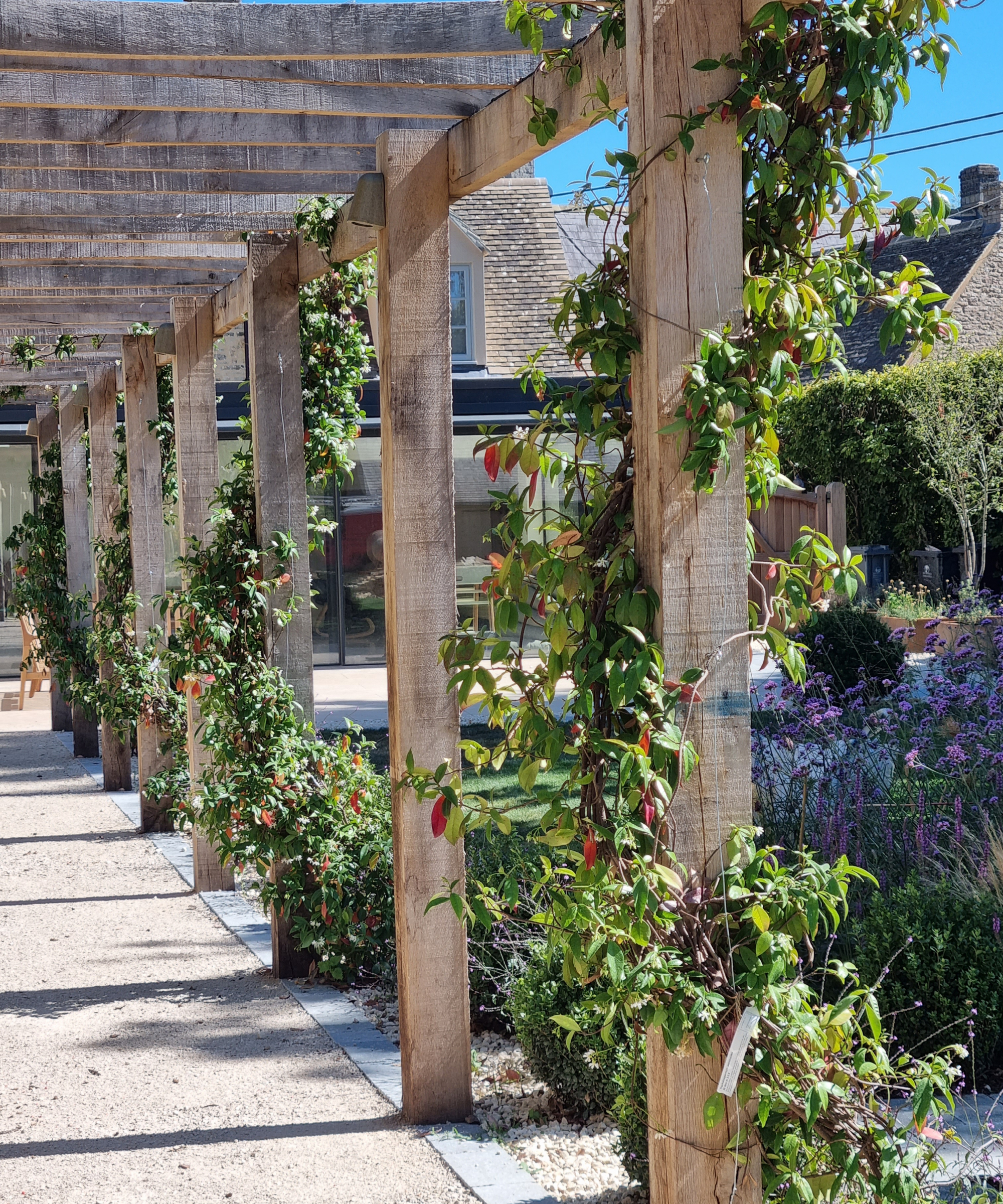

Jenny Davis is the head of marketing at Forest Garden, a manufacturer of wooden garden products. Residing in Worcestershire, UK, Jenny is a mother of two boys and an avid gardener who enjoys growing fruit and vegetables. She also actively participates in testing Forest Garden’s products.
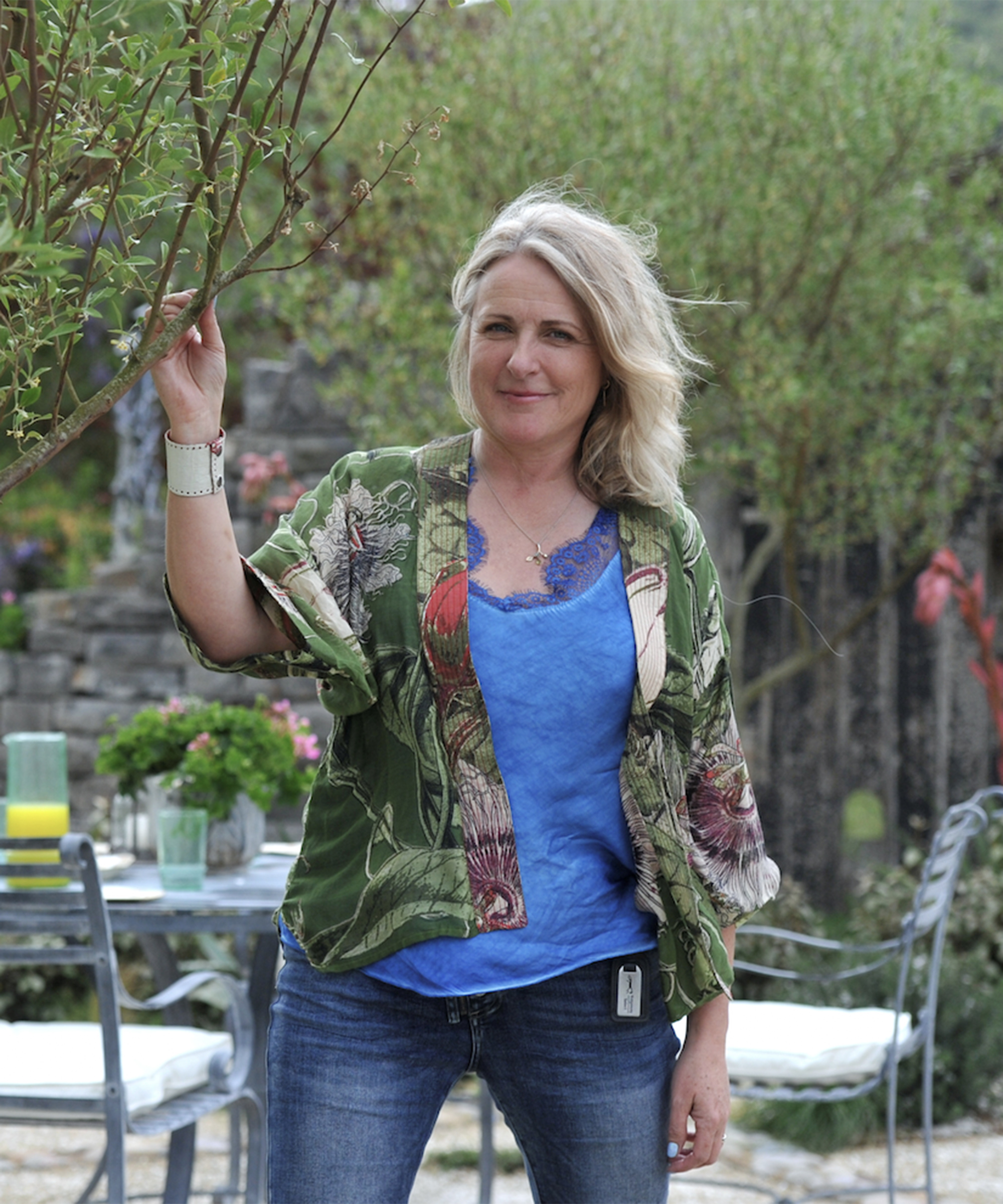
Emily Crowley-Wroe is an RHS multi award-winning garden designer who works closely with clients to create plant rich garden design schemes and creative solutions that add value to their homes, lifestyle and the environment.
Contemporary pergola design
However, while both structures have traditionally been constructed using wood, there are now a wide variety of contemporary pergola designs that offer more than their timber predecessors. The benefit of this means that if you're looking for modern garden ideas, the choice between pergola vs gazebo can also come down to aesthetics as well as purpose.
"Traditional pergolas are timber frameworks for climbing plants, but these have evolved into contemporary designs that are perfect for creating outdoor living spaces beneath," explains Reilly Gray.
"The modern pergolas are made from all-weather industrial grade aluminium that are powder coated in a choice of colours. The key thing to understand is that they are really strong and sturdy whilst remaining lightweight, low maintenance, rust and weather resistant.
"As the structure for these is anchored into the ground for stability," he adds, "it means they will provide a long-lasting entertainment space to be enjoyed for many years."
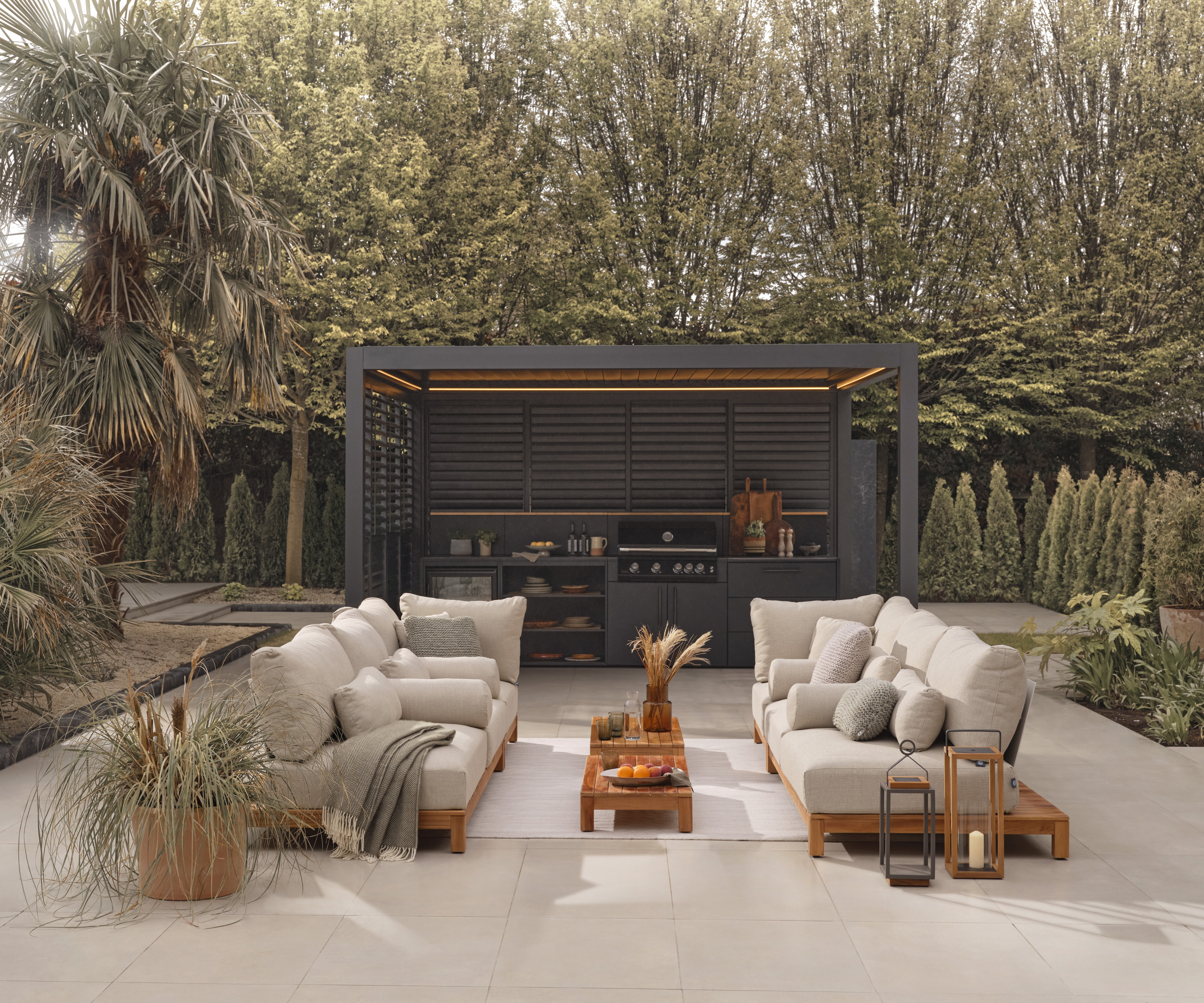
Gazebos: Design features and use
"The term ‘gazebo’ is a British term dating back to the 18th century when it was used to denote ‘a summerhouse, garden pavilion or belvedere, sided to command a view’," explains Reilly Gray. "Historically, gazebos would likely have had side curtains and that could be tied back to make the most of the weather or the view. These days however, the vista may be optional."
"As a gazebo is freestanding, enclosed and often decorative," says Emily Crowley-Wroe, "it's great for creating private, sheltered nooks in the corner of a garden or as a statement in the centre of a garden clothed in climbers."
"Designed to be a cosy, enclosed haven, with a solid roof, a floor and usually walls of some kind, they are perfect for reading a book or al fresco dining – whatever the weather," adds Jenny Davis. As they have their own hard flooring, they are also suitable for lawns or gravel garden ideas.
“They are usually solid wooden structures," notes Jenny, "but of course, there are also pop-up gazebos with which we’re all familiar with – perfect for a party when the weather looks uncertain and can be easily packed away afterwards."
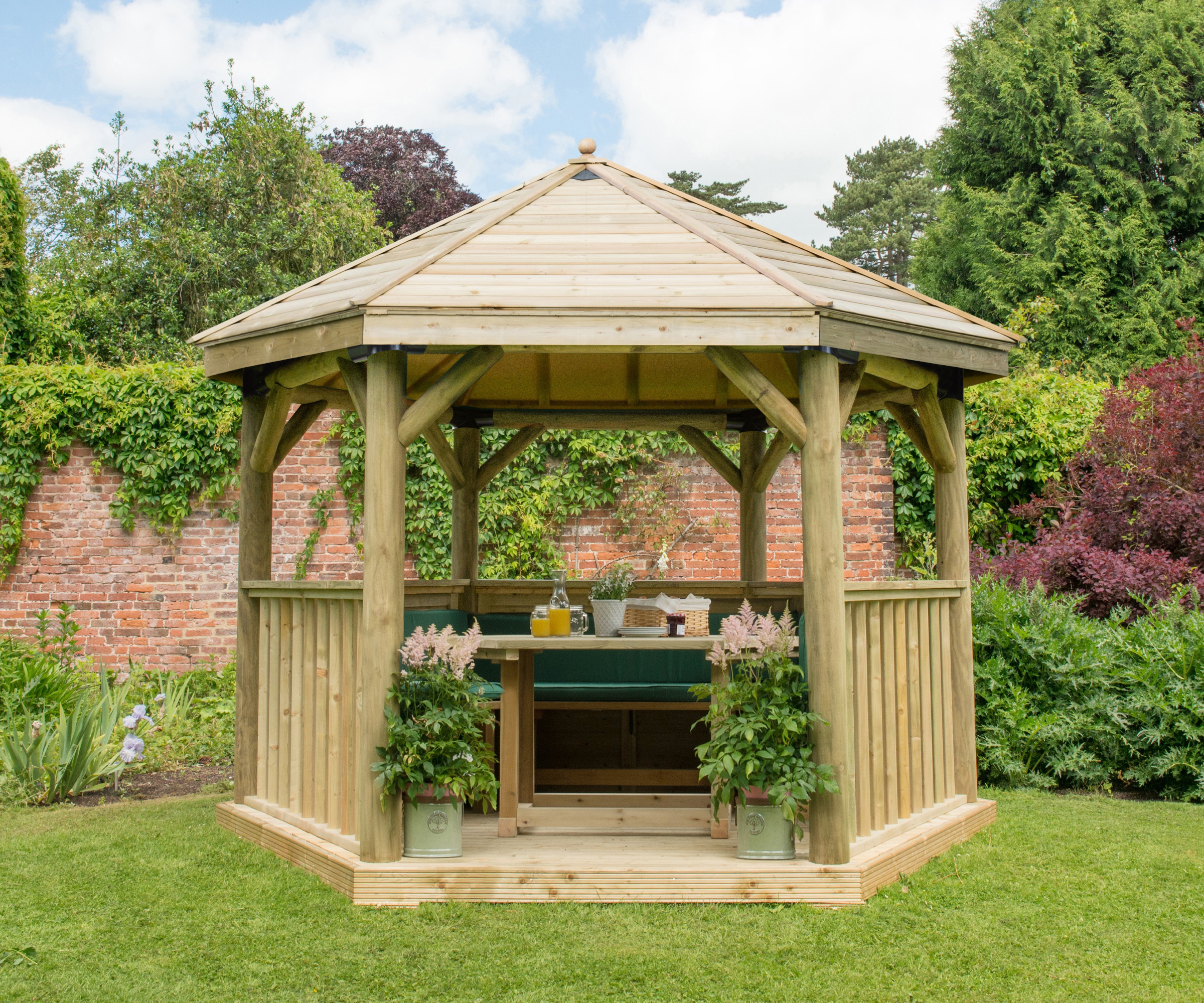
Pergola and gazebo buying options
Pergola vs gazebo: How to choose
"When it comes to finding the right outdoor structure for your garden, there are a few key considerations to take into account to help you pick the right one," says Reilly Gray.
"Think about what you'll use the structure for as this will determine the style and type of materials you'll want to introduce. For instance, a decorative wood frame will add a more traditional feel (and require more maintenance) whereas one in 100% aluminium will have a contemporary finish whilst being more robust, low maintenance, rust-proof and suitable for use all-year-round.
"Aluminium will also last a lot longer than wood and the problem with wooden pergolas is once the wood gets wet it can drip sap on the furniture below which can ruin furniture," he adds. "Powder coated aluminium however will never fade and will look the same forever.
"To make the most of your alfresco enjoyment, also think carefully about the positioning of your pergola or other outdoor structure so that you can enjoy the sunshine at the right time of day.”
"As pergolas can be freestanding or mounted to the side of a house, they can serve as a shelter for a terrace and are great for providing extra shade by bi-fold doors," explains Reilly. "They are the perfect option for those looking for an open structure to accommodate a family-sized garden furniture set, dining set, hot tub or even an outdoor kitchen."
“Pergolas are also perfect for framing patios and decking, giving your garden a 'wow' factor," adds Jenny Davis, noting how if you are seeking an open feel, a pergola is perfect.
However, if cost is an issue, Jenny confirms that traditional wooden gazebos are usually more expensive than wooden pergolas, because they are more substantial buildings.
At the early stages of considering how you might landscape your garden? Why not take a look at our small garden ideas and find out what you can expect to pay for your garden landscape costs.

Sarah is Homebuilding & Renovating’s Assistant Editor and joined the team in 2024. An established homes and interiors writer, Sarah has renovated and extended a number of properties, including a listing building and renovation project that featured on Grand Designs. Although she said she would never buy a listed property again, she has recently purchased a Grade II listed apartment. As it had already been professionally renovated, she has instead set her sights on tackling some changes to improve the building’s energy efficiency, as well as adding some personal touches to the interior.
